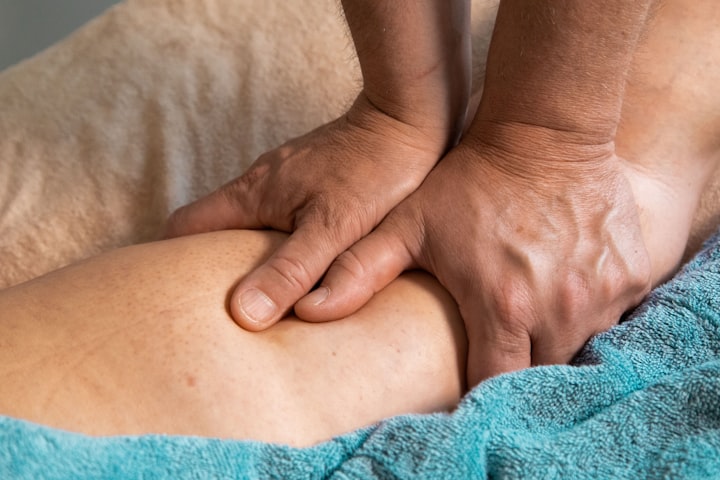Dad's Role in Labour - Part 2
In my last piece, I talked about the role of the dad to be in the birth room. I promised that I'd go into more specific detail, and here it is! There are three stages of labour: dilation (opening), pushing, and birthing the placenta. In this piece I'm going to talk specifically about the opening phase of labour.

All stages
It's important for the mum to be to stay in her own comfy range of movement. She should only use a squat if if feels safe and comfy, for example. If anything feels "off", support her to try something else! Be guided at all times by her wishes and needs.
While these are specific suggestions for different stages, they are only that: suggestions. Every mum, every baby, and every birth is different, so the two of you will cherry pick what resonates and discard the rest.
More important than specific positions at specific times, is that the birthing woman has freedom of movement, and is encouraged to choose dynamic positions, rather than static ones.
All fours, for instance, is a dynamic position; the labouring mum can rest, move or get more upright as she feels she needs. Lying down is a static position. She can't respond to the sensations, and this will make them harder to cope with. She may feel stuck, unable to move out of it without support or permission. She might feel trapped, and her adrenalin will rise and inhibit smooth progress.
The Early Stages
- If labour begins spontaneously, she's probably still at home.
- She's going about her daily routine and can talk or carry on as normal through a contraction
Call the midwife led unit if:
- The mother wants to let them know labour has begun
- Either of you have any concerns
- Waters release and are not clear, especially if the colouring is dark green or greenish black
Pain relief
If you call the midwife led unit, they will probably recommend she has a bath and some paracetemol. There's some speculation that paracetemol could slow things down. It's up to the woman to make an informed choice about whether it will be helpful for her, and whether this will outweigh any potential downsides.
What positions and movements are helpful at this stage?
- Keep upright to keep steady pressure on the cervix, and let gravity help baby move down. UNLESS labour begins at night, then its important to rest (lie on left hand side)
- Leaning forward into something during contraction, such as a worktop or birth ball. This allows the womb to glide in the direction it's trying to go with each contraction
- Rotate during a contraction
- Walking is good, but balance this against rest! At night, rest should be the priority if at all possible.
Note: If mum is experiencing early contractions in her back baby could be back to back (posterior). To encourage baby to turn, use pelvic tilts and rolling cobra from classes. To prevent baby descending too far into the pelvis use the chest to floor resting position.
What breathing technique to use at this time?
- Slow, steady, focused breathing to help her stay calm and relaxed
- If she has been to classes, you can remind her to use the basic breath
- Remind mum to keep a nice soft relaxed jaw (to relax the pelvic floor)
Hands on help
- Try the simple Rebozo techniques demonstrated in the workshop, in particular bump support and sifting
- Massage: Use feather strokes on forearms or back.
Note: Make sure mum rests if labour starts at night! There is a temptation to get up, switch on lights, load the car, "try to get things going" - resist it! You are likely to lose this night of sleep, and probably the following night as well, so conserving energy is very important at this early stage. Have patience!
Established labour
- The labouring mum will seem more ‘introvert’ than before.
- She will be focusing more on each contraction, and no longer able to talk through it.
What movements and positions are helpful at this stage?
- Positions: all fours, birthing ball, lateral (side-lying), on the bed leaning forward
- Rotate to dilate! Remember to work with contractions to maximise their efficiency, and then REST in between to conserve energy!
- Rebozo over the door to give mum something to reach up and hang off. This can be useful if baby is slow to descend.
- Posterior baby: If you suspect baby is posterior, pelvic tilts can be helpful to encourage him or her to shift.
- Movement: the knee supported squat to help descent. Rock back and forth to open the pelvis and create room for baby to move as needed.
- If things are going too fast, get into all fours and then take your head and chest to the floor to slow things down.
- If things are slowing down, get more upright to put pressure on the cervix.
What breathing technique to use at this stage?
- If the mum has been to my classes, gently remind her to use the escalator breath when the basic breath stops working!
Hands on help
- Massage: try the crucifix press from the workshop during contractions
- Rebozo: try the hip squeeze during a contractions, but be very tuned in to the mother and be guided by what she tells you and what feels good or not! If it's not the right time for this technique, it won't feel right, and she will let you know. It's important to start gently and increase steadily as the contractions rises.
- Hold her hand!
- A cool cloth on the brow can be very comforting
Other key things to remember at this stage
- Offer sips after each contraction; a dehydrated uterus contracts more painfully!
- At this stage, contractions are likely to be around 3 in 10 (remember all mums are different!)
- Sipping at this rate means it will take roughly 45 minutes for the bladder to be full, so please remind her to use toilet (hourly)
- If this baby is going to be born in hospital, then t some point during this phase, mum is likely to want to go there. When she says it's time: GO. You have time to get to where you need to be, but she needs to feel heard and safe to avoid her adrenaline rising. Don't question or debate it, just show her by your actions that you believe her completely.
Transition
Mum may suddenly lose her composure due to a surge of adrenaline. This is normal!
She is likely to say, "I can't do it!" or "That's it, I'm going home!"
Contractions are usually very strong, long and close together now.
Transition is intense but usually short!
What movements and positions are helpful at this stage?
The adrenalin surge will prompt her to move more upright. Support her to do this!
Use reassuring touch. The containment hold from our workshop is a good one to try if she's irritable, and finding other massage techniques fussy and annoying.
Important note: She might look more lucid, but this is likely just adrenalin. Her rational brain is (should be) disengaged. Don't engage it unless you absolutely have to!
Don't wake the mother!
- Michel Odent
Use simple words of love and encouragement, and basic reminders to breathe. Speak softly, protect her space. Tell her she's safe and amazing! You are both so nearly there!
Next, I will go into more detail about ways you can guess whereabouts in the process she is. This can help you feel empowered. Not knowing what is going on is a horrible feeling, and leaves you feeling helpless. That's not what we want!
About the Creator
Sam The Doula (Blooming Miracle)
Childbirth Eductator since 2011
Building a resource for mothers-to-be to feel informed and confident about their choices
You can find me on Facebook or book classes with me






Comments
There are no comments for this story
Be the first to respond and start the conversation.